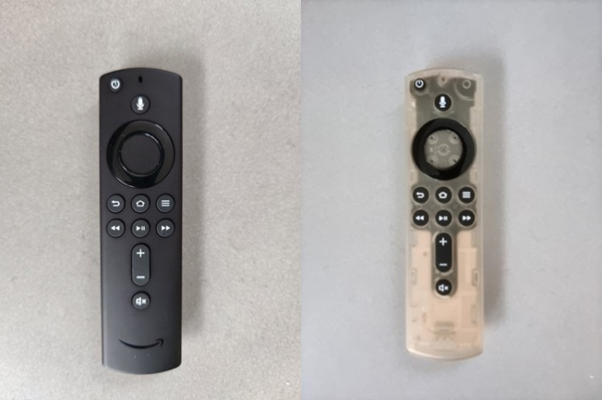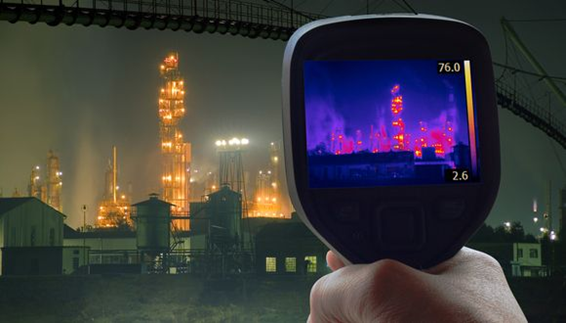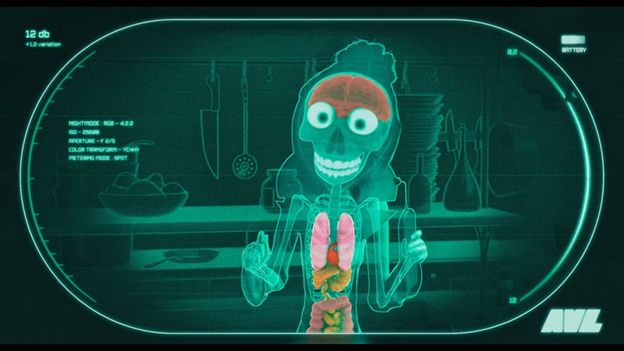
The human visual system does not allow him to see the world in the infrared range (unlike representatives of the fauna, which have special receptors in different parts of the body), but the person was able to compensate for his physical deprivation and, with the help of technical developments, “contemplate” the picture in the infrared spectrum no worse animal.
Technology to help us
It might seem that an article with a statement to embed an IR camera in smartphones came out with a significant delay: such gadgets have long appeared in wide production, remember only the OnePlus 8 Pro camera, which has a filter that is sensitive to light in the IR range and allows you to see through thin plastic and, according to users, even through some clothing. However, the capabilities of such cameras are still very limited.

Snapshots on the camera of the new flagship from OnePlus
In this article we will tell you what pleasures of infrared radiation will become available to us, thanks to a special optical conversion technology, which may later turn out to be part of our smartphone. This is evidenced by a study conducted by Michael Mrayen, a scientist from the Department of Physics at Tel Aviv University.
So what is the Israeli physicist ready to surprise us with?
The specialist speaks of a promising development that has every chance of reaching the consumer level and easily transmitting an image of the mid-infrared range, thereby opening a window for a whole new wealth of data not yet available to the general public.

For example, the new technology will allow to display gases, each of which has a unique color in the infrared range, or various biological substances that occur in nature, but are "invisible" to the human eye, as well as identify cancer cells. Mrayen says current medical devices for detecting cancer use extremely sophisticated and expensive devices, while they have developed a compact, inexpensive and effective alternative. They can do this, he says, using widely available, cheap, fast and efficient silicon-based [visible light] color sensors with high resolution. Conventional mid-infrared sensors are expensive, insensitive, operate below room temperature, and don't have the same high resolution as off-the-shelf silicon camera chips.

The new development, unveiled by Mrayen and his colleagues, shifts light from the mid-IR range to wavelengths that mass-produced silicon chips can detect.
Previously, the main problem in the development of sensors that are sensitive to the mid-IR spectrum was that waves of different wavelengths travel at different speeds through nonlinear materials, as a result of which light waves of different frequencies are out of phase with each other, so only a small part of the light is converted into visible.
The only way to get an informative image in this case is to shift one wavelength at a time. But this requires very sophisticated cameras, too expensive for most users.
Learn more about development capabilities
Looking for the best way to shift mid-IR photons by the wavelength silicon can see, Mreyen's group relied on the adiabatic frequency conversion process previously presented by Mreyen's colleague, Chaim Suchowski. The results of this study allow infrared waves to be slowly converted into visible photons.

Here is a visual representation of the process of converting an image from the mid-infrared range (left) by passing it through nonlinear optics (center) to visible wavelengths that can be recorded by a camera.
Suchowski hopes that by leveraging this adiabatic frequency conversion trick, the sensitive sensors can be installed on smartphones.
“We humans see between red and blue,” Suchowski said in a press release. “If we could see in the infrared, we would see that elements such as hydrogen, carbon and sodium have unique colors. An environmental monitoring satellite that would take a picture in the region saw that the plant was illegally dumping hazardous substances into the environment, or a spy satellite could see where explosives or uranium were hiding. In addition, since every object emits heat in the infrared range, all this information can be seen even at night. ”
List of references:
- Seeing the World in New Colors [Electronic resource]. URL: english.tau.ac.il/news/new-colors-tech
- Adiabatic Frequency Conversion - Geometrical approach [Electronic resource]. URL: www.tau.ac.il/~haimsu/Adiabatic_Frequency_Conversion.html
- Optical Conversion Tech Images Infrared "In Color" - IEEE Spectrum [Electronic resource]. URL: spectrum.ieee.org/tech-talk/semiconductors/optoelectronics/turning-infrared-into-new-colors